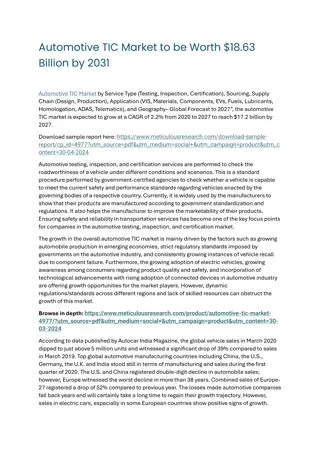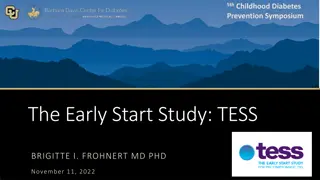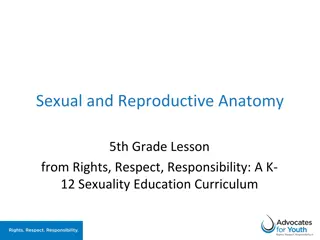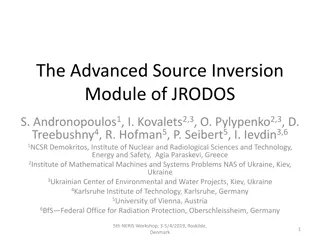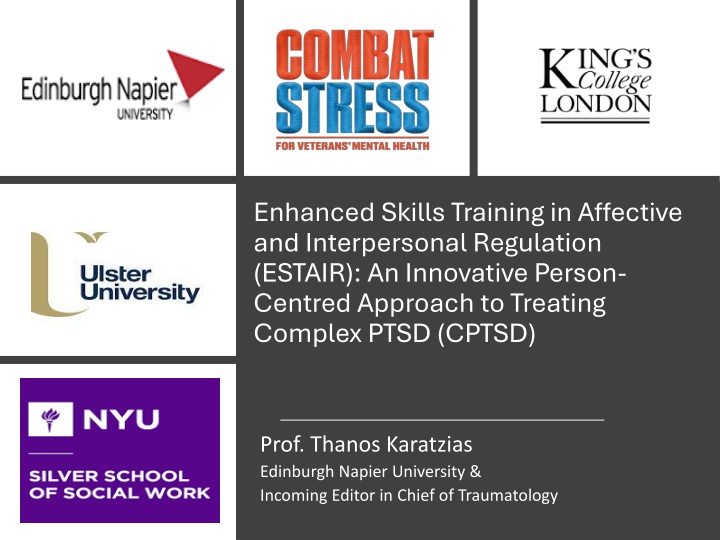
Comprehensive Guide to Understanding and Treating Complex PTSD
Learn about the latest research and treatment approaches for Complex PTSD (CPTSD), including Enhanced Skills Training in Affective and Interpersonal Regulation (ESTAIR), ICD-11 criteria, group therapies, and comparisons of EMDR vs. TfCBT. Discover insights from recent studies and pilot interventions for individuals with complex interpersonal trauma.
Download Presentation

Please find below an Image/Link to download the presentation.
The content on the website is provided AS IS for your information and personal use only. It may not be sold, licensed, or shared on other websites without obtaining consent from the author. If you encounter any issues during the download, it is possible that the publisher has removed the file from their server.
You are allowed to download the files provided on this website for personal or commercial use, subject to the condition that they are used lawfully. All files are the property of their respective owners.
The content on the website is provided AS IS for your information and personal use only. It may not be sold, licensed, or shared on other websites without obtaining consent from the author.
E N D
Presentation Transcript
https://encrypted-tbn2.gstatic.com/images?q=tbn:ANd9GcQc3A5WOESuGGGcHCuEAVwJdcdZ60HoPQYr-g5akATv8UdTIT0MtxRPbLohttps://encrypted-tbn2.gstatic.com/images?q=tbn:ANd9GcQc3A5WOESuGGGcHCuEAVwJdcdZ60HoPQYr-g5akATv8UdTIT0MtxRPbLo Enhanced Skills Training in Affective and Interpersonal Regulation (ESTAIR): An Innovative Person- Centred Approach to Treating Complex PTSD (CPTSD) Prof. Thanos Karatzias Edinburgh Napier University & Incoming Editor in Chief of Traumatology
ICD-11 PTSD and Complex PTSD Gate Criterion: Traumatic Stressor PTSD CPTSD Re-experiencing Re-experiencing Avoidance Avoidance Sense of Threat Sense of Threat Affect Dysregulation Negative Self Concept Disturbed Relationships Functional Impairment Functional Impairment Diagnosis is either PTSD or CPTSD: If PTSD and DSO criteria met = CPTSD Type of trauma is a risk factor not a requirement for a diagnosis
CPTSD Treatment: Where are we? ICD-11 Complex PTSD (CPTSD) is a relatively new condition and there is very limited evidence for its treatment. There is a substantial evidence base on the treatment of PTSD.
Metanalysis of Group Therapies for Complex Interpersonal Trauma Phased 1 interventions can be useful for symptoms of general distress (e.g. anxiety and depression). Phased 2 (Trauma Focused) interventions are required for traumatic stress. Mahoney, Karatzias, Hutton (2019). Journal of Affective Disorders
Pilot RCT of Phase 1 Interventions N = 86 female prisoners with interpersonal trauma. 10 sessions of Phase 1 (group psychoeducation) vs. standard care. Group psychoeducation achieved only small effect sizes in comparison to usual care across all outcomes including behavioural problems, emotional regulation and psychopathology. Mahoney, Karatzias et al. (2020). Clinical Psychology & Psychotherapy
PTSD treatment EMDR vs. TfCBT vs. WL PTSD 40 35 30 25 CBT EMDR WL 20 15 10 5 0 Pre Post Follow up Power et al Karatzias (2002) Clinical Psychology and Psychotherapy Karatzias et al. (2007) European Archives of Psychiatry and Clinical Neuroscience Karatzias et al. (2011) Journal of Nervous and Mental Disease
Are existing therapies effective for CPTSD?
Metanalysis of existing therapies for CPTSD Karatzias et al. (2019) Psychological Medicine
What do we know about the treatment of CPTSD?
Metanalysis of psychological and pharmacological interventions for PTSD following complex trauma Multicomponent interventions that include skills-based strategies along with trauma-focused strategies are the most promising interventions for emotional dysregulation and interpersonal problems in people with complex trauma. Multicomponent interventions that include cognitive restructuring and imaginal exposure are the most effective for reducing PTSD symptoms. Coventry, Meader, Melton,Temple, Dale, Wright,Cloitre, Karatzias et al. (2020). PLOS Medicine
Modular therapy for CPTSD: A person centered approach 1. A thorough assessment of the patient s presenting problems resulting in a case formulation about the underlying causes. 2. Therapist and patient decide on specific CPTSD clusters to target based on preference, readiness and severity using appropriate evidence based interventions. 3. At the end of delivery of this module, an assessment is conducted and the next therapeutic target is selected. Karatzias & Cloitre (2020). Journal of Traumatic Stress
A new modular treatment protocol for CPTSD Enhanced STAIR (ESTAIR) Narrative Therapy for CPTSD 25 sessions: 6 sessions per cluster (Self- concept, affect regulation, interpersonal relationships, PTSD) + a formulation session prior to start of treatment. Cloitre, Karatzias, McGlanachy (2023) Brain Sciences
ESTAIR: Resource Loss Model of Trauma Traumatic stress is an experience of resource loss: Social resources: sense of connection to others Emotional resources: ability to manage emotions Identity: loss of mastery, competency, goodness Cloitre, Karatzias, McGlanachy (2023) Brain Sciences
ESTAIR Modules Affect Dysregulation (AD) : Emotion management, distress tolerance, and acceptance of feelings and experiencing positive emotions. Negative Self-Concept (NSC) : The impact of trauma on one s self concept, how to stay in the present moment and combat dissociation, compassion and mindfulness skills. Disturbed Relationships (DR) : Effective assertiveness, awareness of social context, and flexibility in interpersonal expectations and behaviours that are displayed in social interactions. Narrative Exposure (NE): Mild re-experiencing of the most distressing memory whilst eliciting and altering negative thoughts that are associated with traumatic events.
The RESTORE pilot trial n=56 eligible veterans with CPTSD were randomised to either ESTAIR (n=28) or Treatment as Usual (TAU, n=28). TAU: assessment and psychoeducation. Karatzias et al. (2024). Psychotherapy & Psychosomatics
RESTORE: CPTSD scores at end of treatment and 3-month follow-up Fig. 2. Pre, post-treatment and follow-up mean plot of PTSD and DSO scores Karatzias et al. (2024). Psychotherapy & Psychosomatics
RESTORE: Key findings Treatment dropout in ESTAIR and TAU was low and equivalent (18% vs. 11%; 2 (1) = 1.19, p = .275). No serious adverse effects and very few adverse effects occurred, none of which were deemed related to the study. ESTAIR provided significantly greater reduction in CPTSD severity across time for ITQ PTSD (p < .001) and DSO (p < .001) symptoms. For comorbid symptoms of anxiety and depression greater improvement was observed in the ESTAIR group. No effect on alcohol use was observed. CPTSD pre-to-post effect sizes for ESTAIR were large (PTSD d = 1.26; DSO d = 1.42). Remission of probable CPTSD diagnosis at post-treatment was substantially greater in ESTAIR compared to TAU with only 18.2% versus 84% (p < .001) retaining the diagnosis. Karatzias et al. (2024). Psychotherapy & Psychosomatics
Mean PTSD and DSO scores by module 25.00 20.00 15.00 10.00 5.00 0.00 Baseline Module 1 Module 2 Module 3 Module 4 PTSD DSO Baseline Baseline Module Module 1 1 ER ER 15.09 (4.13) 12.95 (5.13) Module Module 2 2 DR DR 11.90 (3.95) 11.27 (4.76) Module Module 3 3 NSC NSC 12.18 (4.07) 9.77 (4.76) Module Module 4 4 N NE E 7.63 (3.78) 6.81 (4.54) PTSD 19.57 (2.88) 19.78 (2.67) DSO
Complex PTSD Pilot in Japan STAIR Narrative Therapy (Niwa et al., 2022)
Inpatient multicomponent therapy with PE and EMDR Highly traumatised sample with severe dissociation (n=97) in Germany. Eclectic and Multicomponent Therapy included group therapy, art therapy and EMDR or PE for memory processing (average treatment duration was 84 days). Treatment effects were significant and large (g = .91 1.05). There was a significant main effect of reprocessing by time interaction (B = -17.2 [-30.5; -3.8], p = .012), indicating better outcomes with higher levels of reprocessing. Kratzer Karatzias et al. (2023). Journal of Nervous and Mental Disease
Conclusions & directions for future research Modular / multicomponent therapies can be useful for the treatment of CPTSD and comorbidities (depression and anxiety). RESTORE 2. Testing the effectiveness, efficiency and cost- effectiveness of ESTAIR in community samples. Testing the effectiveness of ESTAIR against other established trauma treatments for CPTSD (i.e. TfCBT, EMDR).
With thanks to all our participants and Forces in Mind Trust who funded this work!
Thank you for attending






